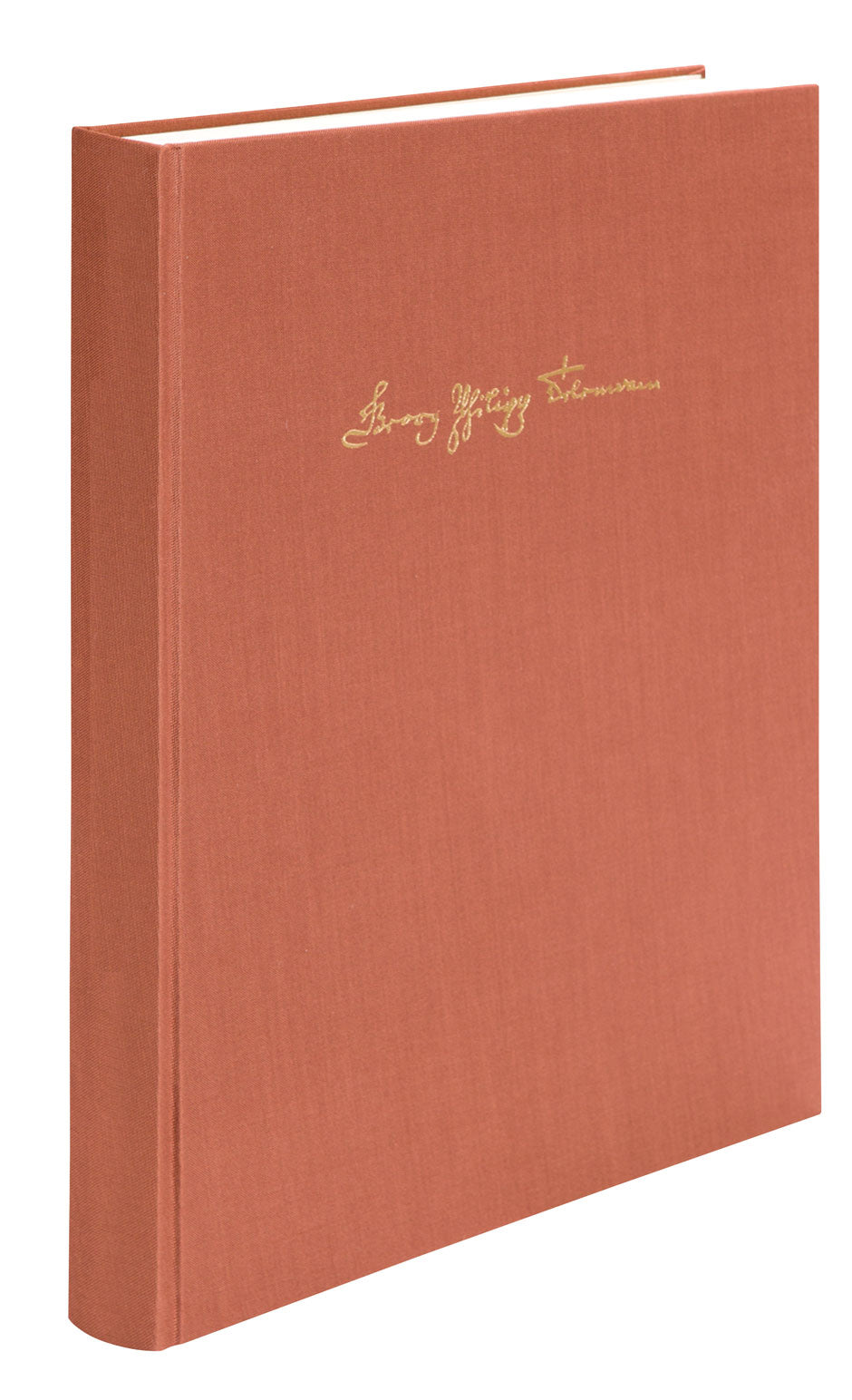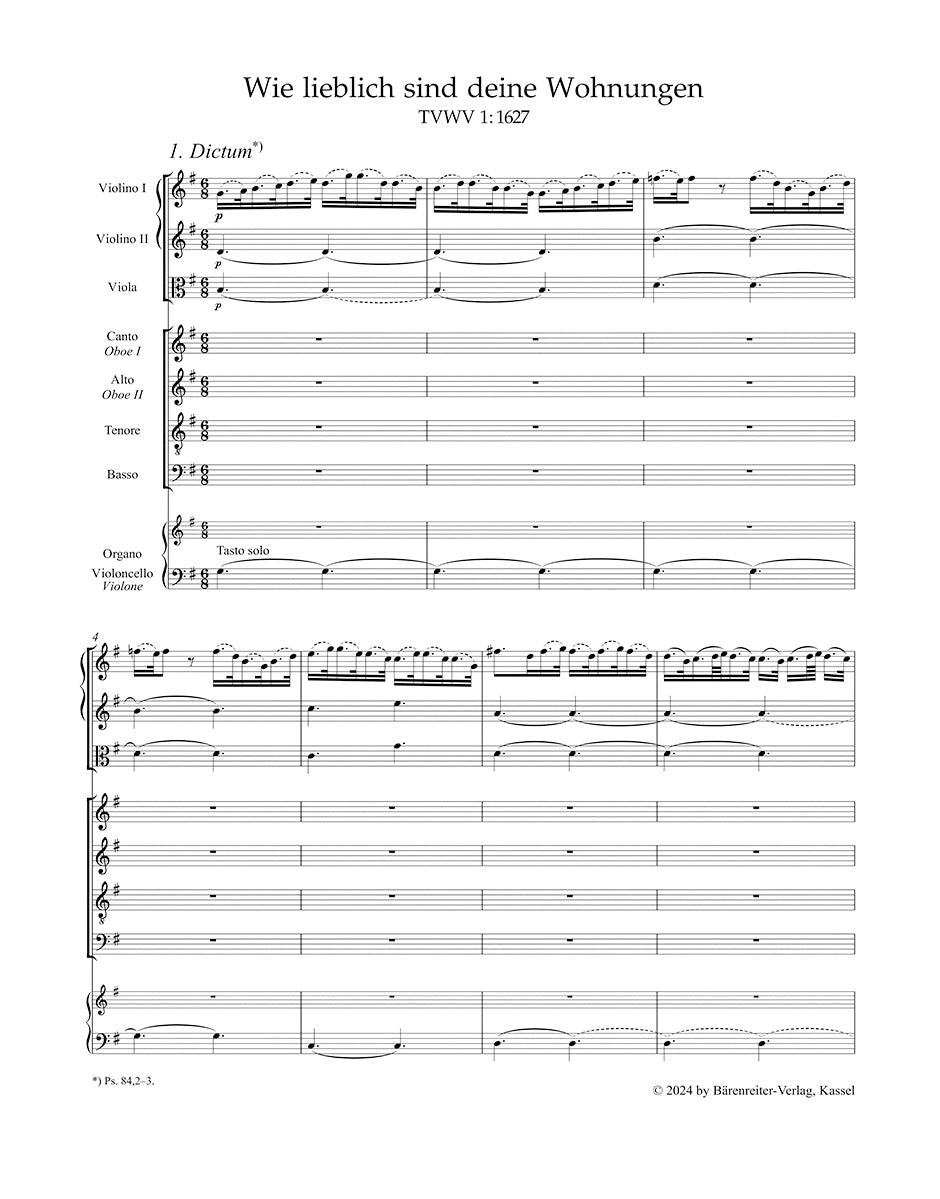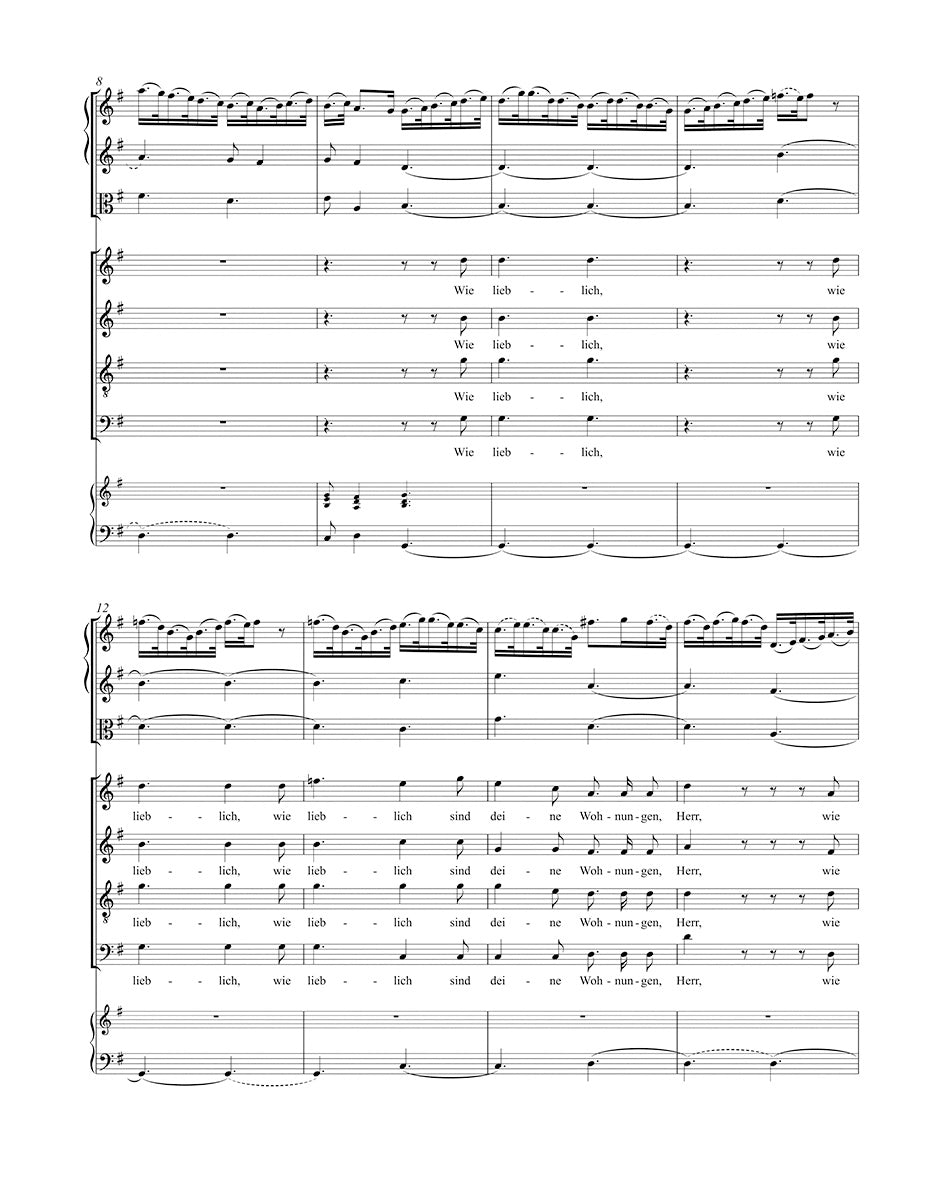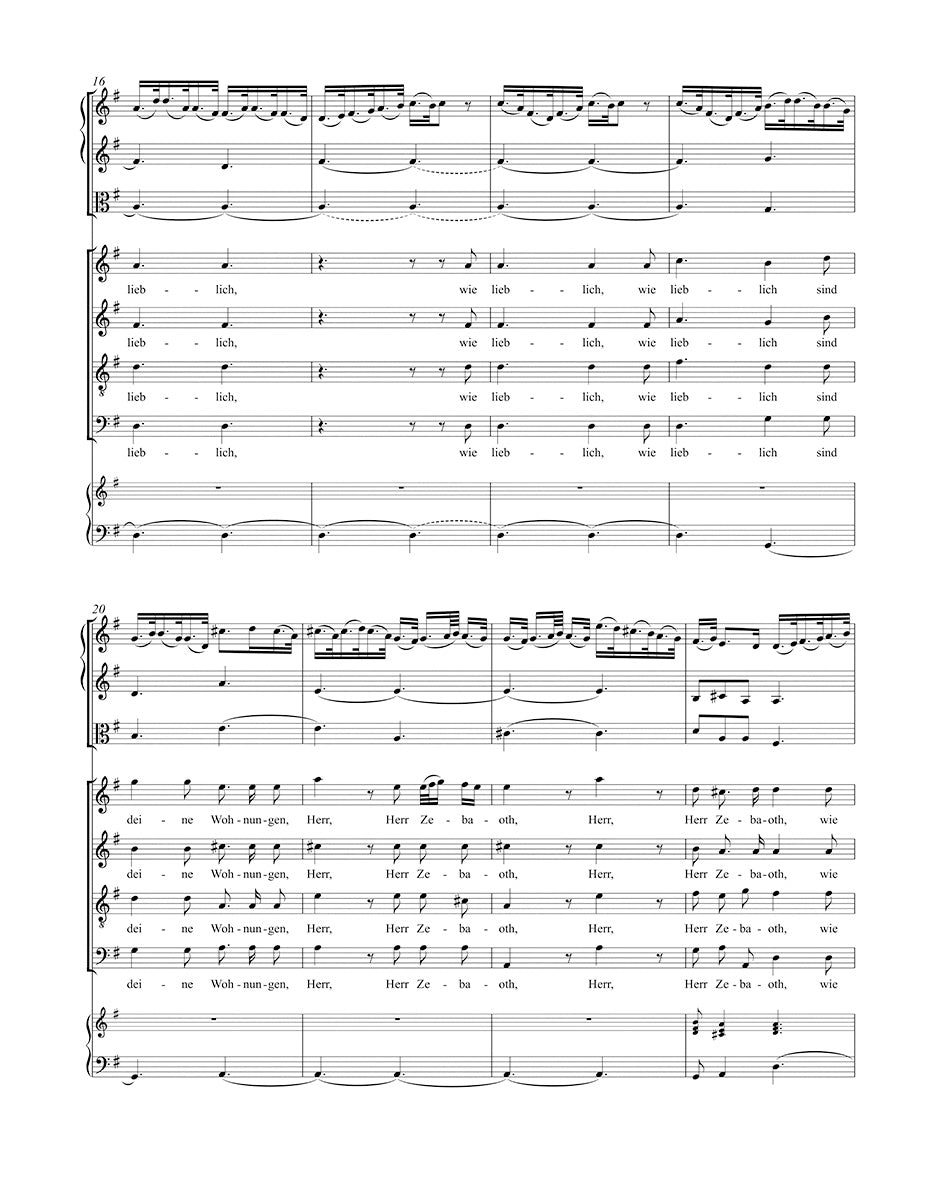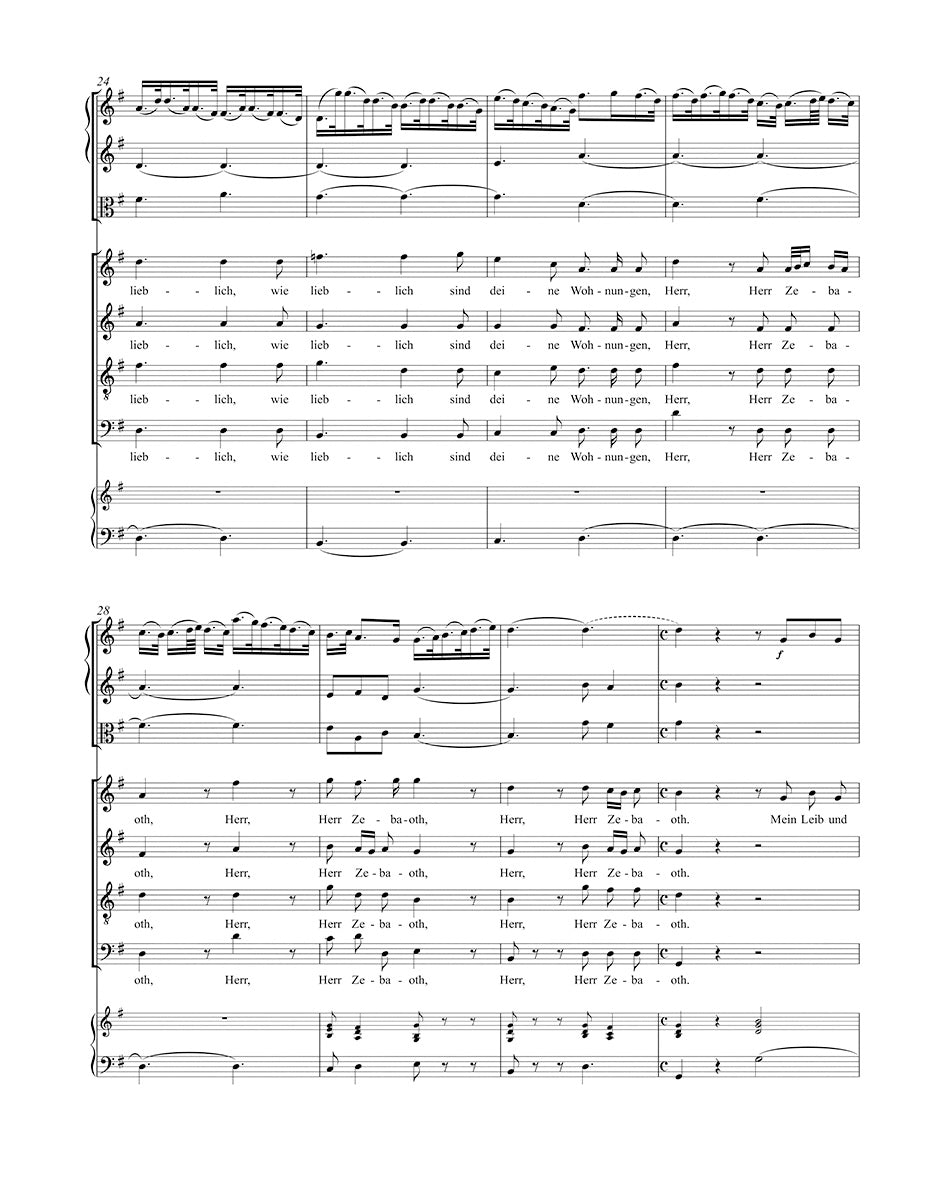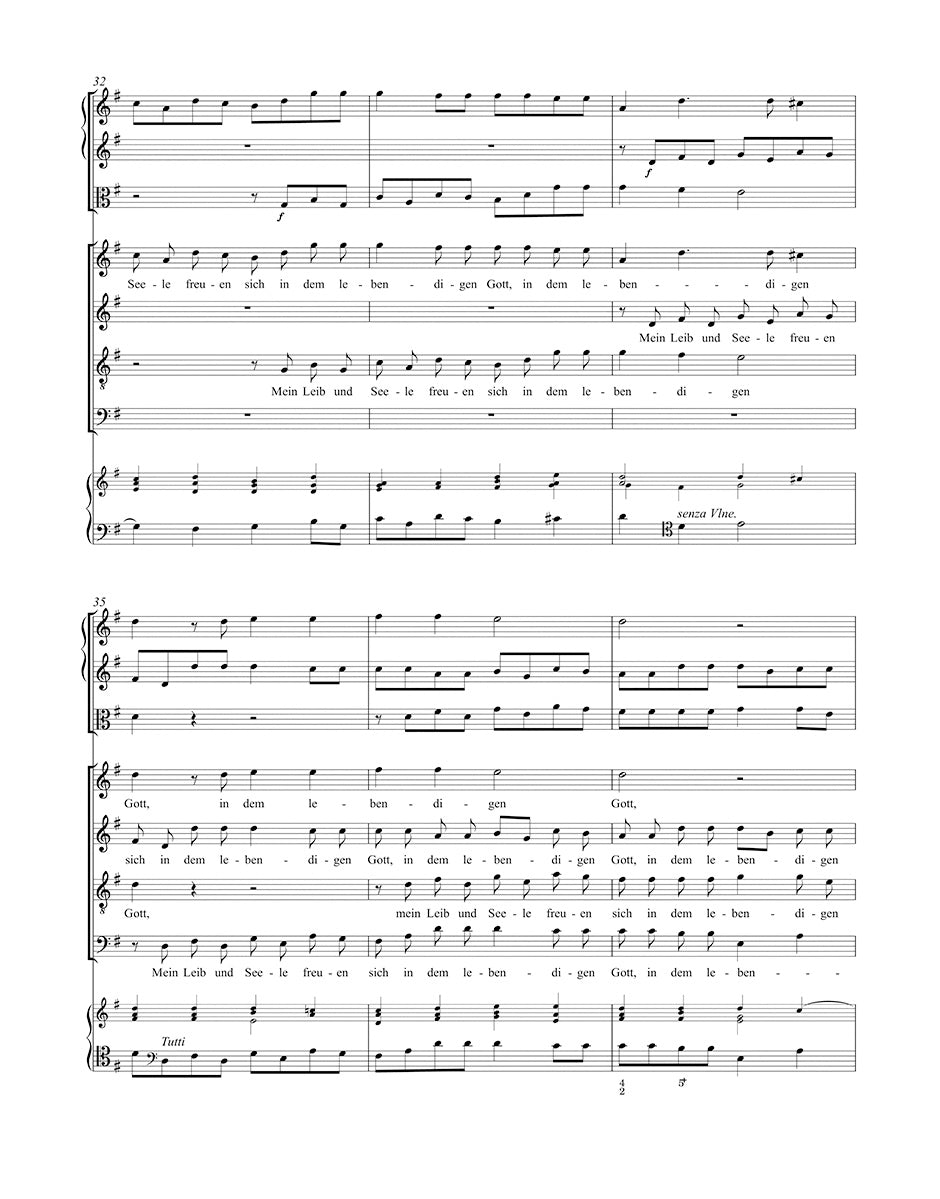Telemann: Geistliches Singen and Spielen
Musical Works Volume 67
Expected to ship in about a week.
- Editor: Wolfgang Hirschmann
- Binding: Hardcover
- Work Language: German
- ISMN:
- Size: 10.2 x 13.0 inches
- Pages: 307
- Urtext / Critical Edition
Description
Volume 67 of the Telemann Musical Works contains the cantatas for New Year to Esto mihi and the Purification of Mary based on texts from the annual cycle "Geistliches Singen and Spielen" by Erdmann Neumeister. Following the publication of a first segment from this annual cycle in 2004 (Telemann Musical Works, 39, ed. by Ute Poetzsch-Seban; 1st Advent to Sunday after Christmas), this volume marks the beginning of a unique project in the series: this annual cycle, which was groundbreaking for Protestant church cantatas and exceptional in the work of Telemann and Neumeister, is being edited in its entirety in a total of seven volumes.
Neumeister's poems, in which he consistently combined the aria and recitative components from opera and secular cantata for the first time with biblical sayings (dicta) and chorales, were set to music by Telemann in Eisenach for the church year 1710/11. in Frankfurt, the composer created new settings, possibly also additions. Due to the extraordinarily widespread reception of these works – which also includes Telemann's reuse of several cantatas in Hamburg – the source situation poses a great challenge, not least because the original Eisenach compositions can often no longer be clearly identified.
The foreword to volume 67 provides a broad basis for the sources – texts as well as music – and for specific questions of performance practice, on which the subsequent volumes can draw. It also contains an edition of the texts of the cantatas published in this volume and in volume 39.
With his intense poetry, which combines a deep theological penetration of the respective themes with great poetic mastery, Neumeister provided Telemann with a perfect template. The cantatas presented here show a correspondingly broad musical spectrum, ranging from a display of splendour and grandiose counterpoint through haunting recitatives and the seriousness of the chorales right to the most diverse forms of arias. Here, and in all seven volumes of the large-scale Telemann Musical Works project, there is a huge musical treasure to discover and unearth anew.
Contents:
- Neujahr. Redet unter einander mit Psalmen and Lobgesängen TVWV 1: 1225
- Sonntag nach Neujahr. Alle, die gottselig leben wollen TVWV 1: 49
- Epiphanias. Ihr Völker, bringet her dem Herrn TVWV 1: 919
- 1 Sonntag nach Epiphanias. Wie lieblich sind deine Wohnungen TVWV 1: 1627
- 2 Sonntag nach Epiphanias. Mein Jesu, ist dir's denn verborgen TVWV 1: 1119
- 3 Sonntag nach Epiphanias. Was mein Gott will, das gscheh allzeit TVWV 1: 1529
- 4 Sonntag nach Epiphanias. Wenn wir in höchsten Nöten sein TVWV 1: 1568
- Mariae Reinigung. Herzlich tut mich verlangen TVWV 1: 784
- 5 Sonntag nach Epiphanias. Seid nüchtern and wachet TVWV 1: 1275
- Septuagesimae. Es ist das Heil uns kommen her TVWV 1: 494
- Sexagesimae. Gleichwie der Regen and Schnee TVWV 1: 630
- Estomihi. Sehet, wir gehn hinauf gen Jerusalem TVWV 1: 1263
Publishers use a lot of words to describe what they sell, and we know it can be confusing. We've tried to be as clear as possible to make sure you get exactly what you are looking for. Below are descriptions of the terms that we use to describe the various formats that music often comes in.
Choral Score
A score for vocalists that only contains the vocal lines. The instrumental parts are not there for reference. Generally, cheaper than a vocal score and requires multiple copies for purchase.
Facsimile
Reproductions of the original hand-written scores from the composer.
Full Score
For ensemble music, this indicates that the edition contains all parts on a single system (there are not separate parts for each player). In larger ensembles, this is for the conductor.
Hardcover
Hardbound. Generally either linen-covered or half-leather.
Orchestral Parts
Similar to a wind set, this is a collection of parts. In the case of strings, the numbers listed are the number of copies included, though generally these are available individually (often with minimum quantities required).
Paperback
When publishers offer multiple bindings (e.g. hardcover) or study scores, this is the "standard" version. If you're planning to play the music, this is probably what you want.
Performance / Playing Score
A score of the music containing all parts on one system, intended for players to share. There are not separate parts for each player.
Set of Parts
For ensemble music, this indicates that there are separate individual parts for each player.
Solo Part with Piano Reduction
For solo pieces with orchestra, this is a version that contains a piano reduction of the orchestra parts. For piano pieces, two copies are typically needed for performance.
Study Score
A small (think choral size) copy of the complete score meant for studying, and not playing. They make great add-ons when learning concertos and small chamber works.
Vocal Score
A score prepared for vocalists that includes the piano/organ part or a reduction of the instrumental parts.
Wind Set
For orchestral music, this is a collection of wind and percussion parts. The specific quantities of each instrument are notated.
With Audio
In addition to the printed music, the edition contains recordings of the pieces. This may be an included CD, or access to files on the internet.
With / Without Fingering (Markings)
Some publishers prepare two copies - a pure Urtext edition that includes no fingering (or bowing) suggestions and a lightly edited version that includes a minimal number of editorial markings.

